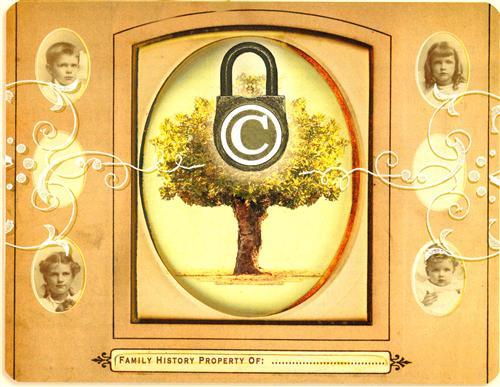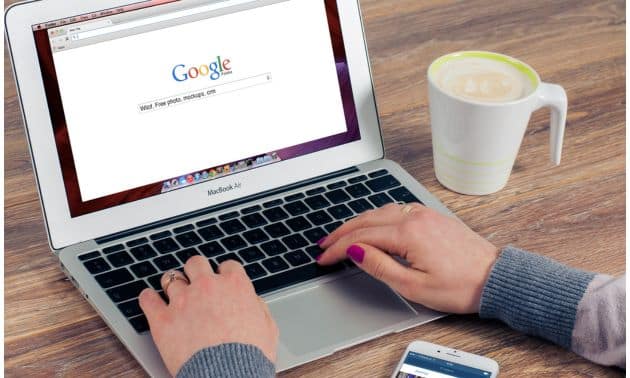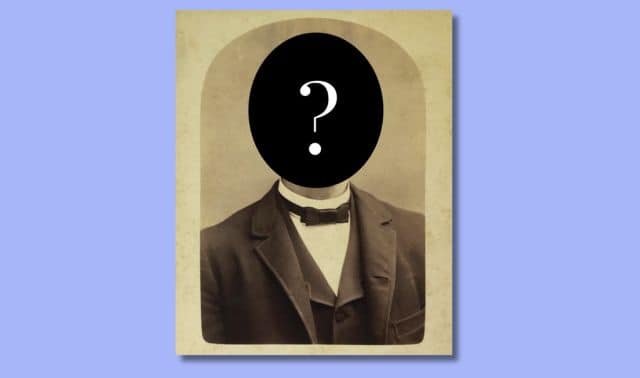Sign up for the Family Tree Newsletter Plus, you’ll receive our 10 Essential Genealogy Research Forms PDF as a special thank you!
Get Your Free Genealogy Forms
"*" indicates required fields

If you’ve read Robert Fulghum’s All I Really Need to Know I Learned in Kindergarten, you know that genealogists have mastered one childhood lesson: how to share with others. When an Internet cousin asks for your research on Great-great-grandpa, you’re happy to oblige. You might even post your ancestral discoveries online or write a book about them.
What you may not have learned in kindergarten is that sharing has limits. For example, the Denver Public Library <www.denver.lib.co.us> might not be pleased if you published one of its online photos in your family history. The author of Springfield County Founders would be similarly underwhelmed if you photocopied chapter seven for your family’s entire California contingent. And Aunt Sue probably wouldn’t consider it a personal favor if you submitted her GEDCOMs to GenCircles <www.gencircles.com> without first getting her OK.
US copyright laws dictate the dos and don’ts of using others’ research — even when it’s about your own ancestors. Unfortunately, those laws are notoriously bewildering. So how do well-intentioned genealogists like you get past the legal mumbo jumbo and stay on the right side of the law? Don’t upload another family file or duplicate another photo without reading our essential, plain-English guide to genealogists’ common copyright questions.
The law automatically protects original works — you don’t have to register them with the US Copyright Office <www.copyright.gov>. It’s a good idea, though: By registering your published family history or cookbook, you make your copyright a matter of public record. You’ll have legal advantages if you ever go to court over a violation.
Q: What kinds of works are copyrighted?
• Written material: books, magazines, newspapers, articles, diaries, manuscripts, poetry, catalogs, brochures, ads, directories, encyclopedias, electronic databases, computer programs
• Visual material: photographs, prints, art reproductions, maps, charts, drawings, statues, dolls, motion pictures, plays and other audiovisual presentations
• Music: songs, lyrics, choreography
• Architectural works: building designs and diagrams
• Facts, such as the information that your grandfather was born in Covington, Campbell County, Ky., in 1901
• Ideas, concepts, procedures and principles (patents protect these)
• Names, titles and slogans (trademark protects these)
• Blank forms, such as family group sheets and pedigree charts (but unique designs for these forms, such as those at <www.familytreemagazine.com/freeforms>, are protected)
• Recipes (although recipe collections, as well as the instructions to an individual recipe, are protected)
• Certain works the US government commissions as works for hire
• Government-created, genealogically useful documents, including military service records, birth certificates, census schedules (privacy restrictions may apply to recent records)
Q: How long does copyright last?
Due to complicated, ever-changing copyright laws, the duration depends on when a work was created and if it was published. Here are simplified guidelines (exceptions apply); see <www.copyright.cornell.edu/resources/publicdomain.cfm> for details:
• Works published before Jan. 1, 1923, are in the public domain (meaning anyone can use, adapt or copy them freely).
• Works published between 1923 and 1963 were protected for 28 years — but the copyright could be renewed for 47 years, then extended for another 20. If the copyright wasn’t renewed, the work is in the public domain. About 85 percent of works published during this period aren’t protected anymore.
• If a work was published between 1964 and 1977, the copyright lasts a total of 95 years.
• Any published or unpublished work created on or after Jan. 1, 1978, is protected for the life of the creator plus 70 years.
• A work created before Jan. 1, 1978, and published between that date and Dec. 31, 2002, is protected for the life of the creator plus 70 years or until Dec. 31, 2047, whichever is greater.
Confused? You can assume that anything published within the past 75 years is protected. Once the copyright expires, a work moves into the public domain.
Q: How can I tell if a work is in the public domain?
If you want to include parts of an old diary or book in a project you’ll publish or distribute (say, a Web site or a research compilation to sell at a family reunion), it’s your responsibility to determine whether the work is protected by copyright. It may not be easy — there’s no database to consult or number to call. You’ll need to know when the creator made the work, whether she’s alive (if not, when she died), and whether she published it. Then use the copyright-duration guidelines above.
For example, suppose you find a drawing in Great-aunt Eloise’s attic. It’s dated 1776 and as far as you can tell, no one published it. Are you free to reproduce it? You bet. Even if your artist ancestor lived well into old age, the 70-year duration has long passed. But before using it, check out New Rules for Using Public Domain Materials <www.copylaw.com/new_articles/PublicDomain.html>.
Or let’s say you have the unpublished diary Great-grandpa Ebenezer wrote in 1892. Can you publish it? First you need to know when Ebenezer died. If he passed away in 1939, his diary would be protected until 2009, so you’d need permission from his heirs — usually his children or grandchildren. Might be easier to wait five more years for the copyright to expire.
Visit <www.copyright.gov/circs/circ22.html> to read the US Copyright Office guide “How to Investigate the Copyright Status of a Work” or submit a research request for a fee. If you have any questions about the legality of using someone else’s research, consult a copyright lawyer.
Q: lf a work isn’t in the public domain, how do I get permission to use it on my Web site or in my book?
Don’t wait until the last minute to secure copyright permission — publishers may take four to six weeks or longer to process your request. Here’s who you need to contact:
• Books: Write to the publisher. Look for an address at the front of the book or on the publisher’s Web site.
• Photos and articles in magazines or journals: If a freelancer snapped the photo or wrote the article, he might own the copyright. Write to the editor, and she’ll forward your request if necessary.
• Online photos, documents and materials: Write to the site’s owner. Look for a Contact Us link or permissions page.
• Other photographs: Track down the photographer. If the people pictured are living, you need their permission, too.
• Song lyrics: Contact the music publisher (look on the album cover or the Internet).
• Newspaper obituaries, articles and photos: Write to the newspaper.
Q: What if I just want to print research from the Internet to send to Uncle Clarence, or photocopy an article for my files?
The law allows for “fair use” of copyrighted works. According to The Copyright Permission and Libel Handbook, “Fair use is a privilege. It permits authors, scholars, researchers and educators to borrow small portions of a copyrighted work for socially productive purposes without asking permission or paying a fee.”
This means you can download GEDCOMs from an online database and merge them with your files, print a page of an online database and tuck it into your file drawer, or photocopy a book passage to paste into your scrapbook. Sending such copies to a few cousins is OK, too. But if you want to send the photocopy or printed database page to all 85 members of your genealogical society, or if you plan to charge for the information, you’ll need to get permission. If you want to publish information you’ve downloaded as a GEDCOM — which is based on someone else’s research — ask permission and give credit.
Q: lf I upload GEDCOMs to a Web site, do they belong to the site or to me?
Although this area of law hasn’t been tested in court, online databases post terms of use that you implicitly agree to when you upload GEDCOMs. Generally, those terms allow the site owner to sell, publish and otherwise use the visitor-submitted information as the owner sees fit. That GEDCOM database is considered a compilation, which the owner’s copyright protects (see the next question). If you don’t like that idea, don’t click Upload. And though it’s probably not illegal, it’s not nice to submit other people’s GEDCOMs without asking first.
Q: But don’t I own the information about my own ancestor?
No one — including you — owns the information about your ancestor, since copyright doesn’t protect facts. But compilations of facts, such as the databases at Ancestry.com <www.ancestry.com> and other genealogy Web sites, are protected (unless, of course, a government employee created the database as part of his job).
Say you’ve gathered your family facts (names, dates, places) and added your own thoughts, some biographical information and historical context. You’re on the eve of publishing your book, when you happen across a genealogy Web site containing many of your facts. Apparently, cousin Ethel, with whom you’ve shared family group sheets over the years, submitted the data you supplied.
Is that a violation of your copyright? No, because copyright doesn’t protect those names, dates and places. But were Ethel to post that information in the form of entire passages from your book, she’d be asking for a family feud — or a lawsuit.
Q: Then how much of a book can I quote and still call it fair use? 100 words? 200?
There’s no magic number. Many factors affect whether fair use applies: how you intend to use the work (in a family history you plan to sell, or for a noncommercial purpose), the nature of the work (you can quote far more from War and Peace than you can from a limerick), the importance of the quoted passage to the original work (don’t give away the whodunit in a murder mystery) and the effect your use would have on the market (would someone buy your work instead of the work you’ve quoted?).
Only a copyright attorney can say for sure what’s fair use in your case. But in general, follow these two guidelines: Quote or paraphrase only as much as is necessary to make your point — and cite the original work. Then consider whether you’d have a problem with someone quoting or paraphrasing that much of your work without asking permission.
Q: Could I publish an ancestor’s journal that I find in an archive?
Copyright guidelines would apply here, although the heirs may have granted their copyright to the repository. Since the archive owns the physical journal, you still need its permission — and you may have to pay a fee. That’s because copyright ownership and physical ownership are separate issues. Even if the journal is in the public domain, it’s a one-of-a-kind historical item, so physical ownership entitles the repository to charge a user’s fee. The same goes for historical photos in online databases (see the next question).
Q: How can I tell who owns an old photo that I’ve found online?
Ask. The Web site owner should be able to tell you who owns the image. The Library of Congress American Memory site <memory.loc.gov>, for example, displays many historical images digitized by other archives, and you have to go to the right archive for permission to use its photo. Similarly, if you want to use a Boston Historical Society photograph from Joe Schmo’s Web site, check with the society — not Joe. No matter where you find images online, unless the Web site expressly states that the images are copyright-free, always ask permission before sharing or posting them to your own site. Better yet, if you want to share an online photo with someone, give him the site’s URL and suggest he take a look.
Q: What about family photographs? Can I share or post them to my Web site?
Photographs are a complicated matter. The photographer holds the copyright, but the people portrayed in the image also have a right to privacy. So before you put last year’s family reunion photo online, get the permission of everyone in the photo, as well as the person behind the camera.
ADVERTISEMENT




